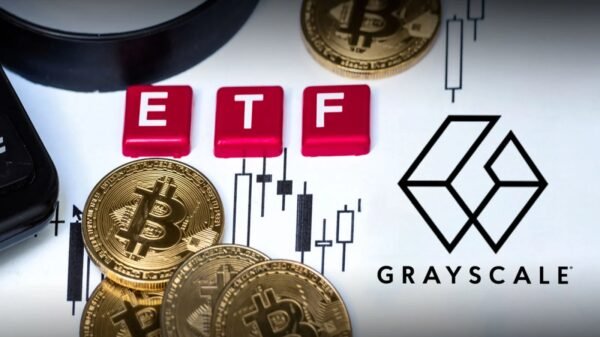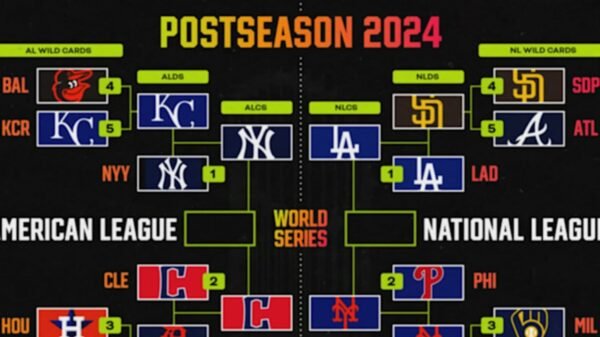The sudden downpour that compelled qualifying for Components 1’s Brazilian Grand Prix to be postponed has prompted nice intrigue a few distinctive ‘what if’ state of affairs.
And it’s that, if the climate in Sao Paulo stays treacherous on Sunday morning and the rescheduled session can’t run, how will the grid for the F1 race be shaped?
The matter has no definitive reply as a result of, fairly amazingly, there’s nothing within the 2024 F1 Sporting Laws that lays out definitively how a grid can be outlined if qualifying can’t happen.
Fairly why that is the case just isn’t clear, however curiously it’s one thing that has been addressed for the 2025 season with an modification to the laws already stating how a grid can be put collectively in such circumstances.
Watch: What Brazil’s Rained Off Qualifying Means for Sundays Race – F1 Saturday Response
A brand new Article 42.1 of the Sporting Laws states that “within the distinctive circumstance” that qualifying doesn’t happen then “with acceptance of the Stewards that the session can’t happen, the grid for the race can be outlined primarily based upon the drivers’ championship classification.”
That alteration was put in after the latest F1 Fee and World Motor Sport Council conferences final month, however it’s understood it got here too late for an settlement to be reached for them to added to the 2024 guidelines.
So the place does that go away issues below the present circumstance for outlining a grid proper now?
There are two laws right here that probably cope with the state of affairs of forming a grid when no qualifying instances have been set – though neither are specific in whether or not or not they cope with the circumstances of there being no qualifying session.
There’s Article 39.4b that particulars a state of affairs of coping with drivers who’re “unclassified.” That is for any driver that “didn’t set a time in Q1 or SQ1, or if all their laps had been deleted.”
Rain falls forward of the qualifying
Photograph by: Purple Bull Content material Pool

The foundations then go on to elucidate that the classification of such a driver can be allotted “in accordance with the order they had been categorised in P3 (or, within the case a Dash Session is scheduled, P1).”
This rule is intriguing although as a result of it may be topic to a substantial amount of interpretation.
One viewpoint is that if qualifying is cancelled, as a result of all drivers didn’t set a time in Q1, then everyone seems to be ‘unclassified’ so on a dash weekend that order can be determined by P1.
That may imply the quickest driver in opening apply, Lando Norris, taking pole place – with Max Verstappen being handed fifteenth on the grid earlier than being moved back another five places because of his engine grid penalty.
Nevertheless, such an interpretation of the principles just isn’t shared by everybody as a result of there’s a viewpoint that if qualifying is cancelled, however SQ1 has taken place, then the wording of 39.4b) truly signifies that any driver who did a lap in dash qualifying is ‘categorised’.
In that case, article 42.3 is triggered which offers with how the grid order is handed out.
This states: “Labeled drivers who’ve obtained 15 or much less cumulative grid penalties can be allotted a short lived grid place equal to their qualifying session or dash qualifying session classification plus the sum of their grid penalties.”
Max Verstappen, Purple Bull Racing
Photograph by: Purple Bull Content material Pool

On this case, it may be interpreted that the grid order for categorised drivers is taken from their dash qualifying classification.
That may imply Oscar Piastri takes pole place for the grand prix forward of Norris, with Verstappen down in fourth place.
All of this debate in regards to the interpretation of the laws is outmoded, nevertheless, by the Worldwide Sporting Code.
A check case for this got here on the 2019 Japanese Grand Prix when there was a threat of the grid not being shaped in related circumstances when qualifying was rained off on Saturday morning and delayed till Sunday.
Amid fears that qualifying might not even happen then, the stewards issued a be aware detailing what would occur in the event that they needed to type a grid with out it.
They famous that “the FIA Components 1 Sporting Laws are silent on the topic.”
As an alternative, they exercised the authority that was handed all the way down to them below Article 11.9.3b of the Worldwide Sporting Code to resolve how the grid can be shaped.

Charles Leclerc, Ferrari SF90, Carlos Sainz Jr., McLaren MCL34, and Sebastian Vettel, Ferrari SF90, within the pit lane at the beginning of Qualifying
Photograph by: Mark Sutton / Motorsport Photos
This ISC rule offers the stewards whole authority to “amend the Supplementary Laws” – which successfully means they will resolve how a grid is shaped.
On the time they concluded that this is able to be primarily based on the second free apply instances from Suzuka, which was the final aggressive session that happened as a result of Saturday was an entire wash-out.
Within the occasion that Sunday qualifying doesn’t occur in Brazil then a repeat circumstance of the stewards choosing which session determines the grid can be enacted – and would probably be the dash qualifying consequence.
Nevertheless, there’s nothing to cease them selecting any standards they need.
On this article
Be the primary to know and subscribe for real-time information e mail updates on these matters

























































